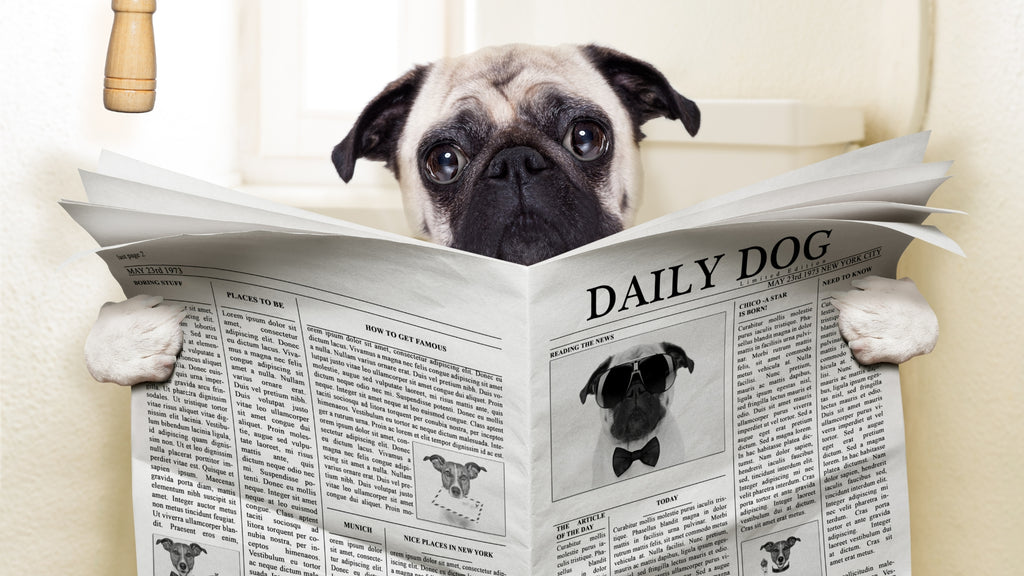Mastering Indoor Potty/Peepad Training: A Guide for Young Puppies by Paw Palace SG
Posted by MY STORE ADMIN

The Complete Guide to Indoor Potty/Peepad Training for Young Puppies
Puppy potty training

Introduction:
Bringing home a new puppy is an exciting adventure, but it also comes with the responsibility of potty training. Indoor potty or peepad training is a popular method for pet owners living in apartments or areas with limited outdoor space. With the right tools, patience, and consistency, you can successfully teach your puppy to use designated potty areas indoors. In this comprehensive guide, we'll walk you through the items you'll need, a step-by-step training process, and valuable tips for a smooth and successful transition.

Items Required:
Before diving into the training process, gather the following essential items:
1. Playpen or confinement area: Create a designated space for your puppy to learn and play.
2. Pee pads or indoor potty: Choose high-quality, absorbent pads or a designated indoor potty area.
3. Treats: Use small, tasty treats as rewards for successful potty behavior.
4. Cleaning supplies: Have enzymatic cleaners on hand to effectively clean any accidents.
5. Patience and consistency: Training a puppy requires time, patience, and a consistent routine.

Step-by-Step Guide:
1. Set Up the Potty Area:
- Choose a quiet, easily accessible area in your home for the indoor potty.
- Place the pee pads or indoor potty in the designated area.
- Enclose the area with a playpen or baby gate to limit your puppy's access to other parts of the house.
2. Establish a Routine:
- Take your puppy to the potty area first thing in the morning, after meals, after naps, and before bedtime.
- Use verbal cues such as "go potty" to encourage your puppy to eliminate in the designated area.
3. Supervise and Redirect:
- Keep a close eye on your puppy when they're out of the playpen.
- If you catch them sniffing or circling, quickly redirect them to the potty area.
- Praise and reward your puppy with treats immediately after they eliminate on the pee pads.
4. Consistency is Key:
- Stick to a consistent schedule for potty breaks to reinforce good habits.
- Avoid punishing your puppy for accidents, as this can cause confusion and anxiety.

Changes in Progress:
As you progress with indoor potty training, you'll notice several changes in your puppy's behavior:
- Improved bladder control: Your puppy will gradually learn to hold their bladder for longer periods between potty breaks.
- Increased understanding of cues: With consistent training, your puppy will learn to associate verbal cues with the act of eliminating.
- Fewer accidents: Over time, accidents will become less frequent as your puppy learns to use the designated potty area consistently.
Special Tips/Guide:
- Be patient and consistent: Potty training takes time and requires patience. Consistency in your approach and routine is key to success.
- Use positive reinforcement: Praise and reward your puppy for using the potty area correctly to reinforce good behavior.
- Clean accidents promptly: Use enzymatic cleaners to thoroughly clean any accidents to remove lingering odors and prevent repeat incidents.
- Gradually increase freedom: As your puppy becomes more reliable with indoor potty training, gradually increase their freedom around the house under supervision.

Conclusion:
Indoor potty or peepad training for young puppies requires dedication, patience, and consistency. By following the step-by-step guide and incorporating valuable tips, you can successfully teach your puppy to use designated potty areas indoors. Remember to celebrate progress and be patient with setbacks, as each puppy learns at their own pace. With time and positive reinforcement, you'll establish a reliable potty routine and enjoy a clean and harmonious living space with your furry companion.



